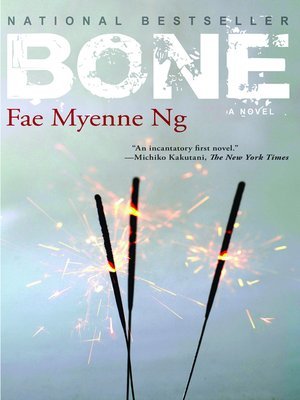A Review of Fae Myenne Ng's Bone
Aug. 27th, 2019 07:29 pmBy Heejoo Park

According to Fae Myenne Ng, bones, papers, and stories, those are what hold together a Chinese immigrant family – Leila, Ona, Nina, Leon, Mah, and Grandpa Leong – based in San Francisco more than blood. Published in 1993, Ng’s novel, Bone, follows a circular narrative that revolves around the death of Ona, the middle daughter of a Chinese American family that is trying to piece together what drove her to kill herself by jumping off a building in Chinatown. Told from Leila, the eldest daughter’s perspective, the narrative avoids returning to the immediate moments after Ona’s death until the very end as it is a traumatic loss that evades language. As it is often the case with children of immigrants who act as translators for their first generation parents, there is also a recognizable weariness in Leila’s narrative voice: “But I didn’t translate that for Mah or tell her everything else I heard, because by then I was all worn-out from dealing with death in two languages.”
While the characters are occupied with what went wrong and who is to blame, Ng invites the readers to consider more widely themes such as love, family, kinship, debts and so forth that have been taken up by various critics such as erin Khuê Ninh and Eleanor Ty. What struck out to me are the unmaking and the re-making of the family via bones, papers, and stories. Leon Leong, Leila’s stepfather and Ona’s biological father, for instance, believes that his failure to fulfill his duties as a paper son to return Grandpa Leong’s bones to China is to blame for his daughter’s death. However, bones also reappear in the novel as the bones of lesser parts such as the neck, the back, and the head, that Mah sucks in the kitchen. She says, “Bones are sweeter than you know.” It is those nonchalant words and those everyday acts that are her expression of love instead of “I love you” told directly to her daughters.
*mild spoiler alert*
Paper also looms as an important object that makes the ties between family members both tenuous and strong. Late into the novel, Leila finds a briefcase full of documents that Leon has kept all this time since coming to the United States on S.S. Lincoln. Leila wonders what kind of identity she has as a stepdaughter of a paper son. Where could she possibly find an authentic history of her and her sisters? As the narrative inches toward the event itself, she comes to the realization that it matters little which version of the story is real or fake as all versions structure their lives significantly in one way or another. Though Bone is on the shorter side of what I have read in the past couple of years, it is one of those works that takes time to emotionally recover from. If you are not already familiar with Ng’s work, I would strongly recommend picking this one up.
no subject
Date: 2019-08-29 06:11 am (UTC)